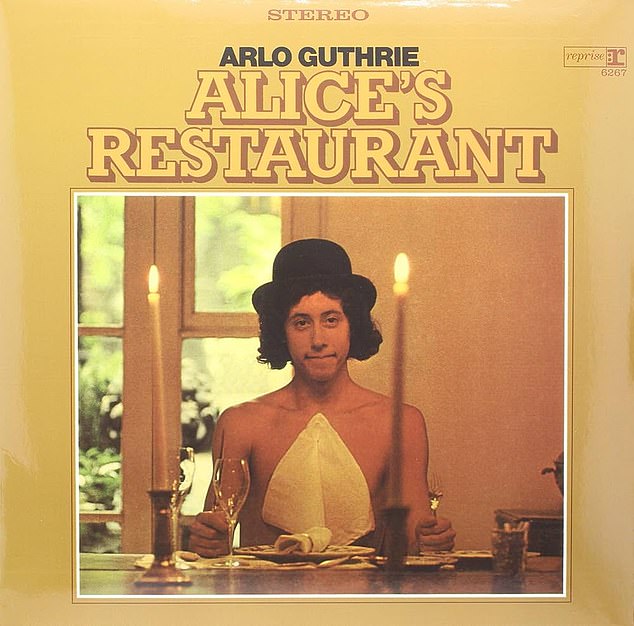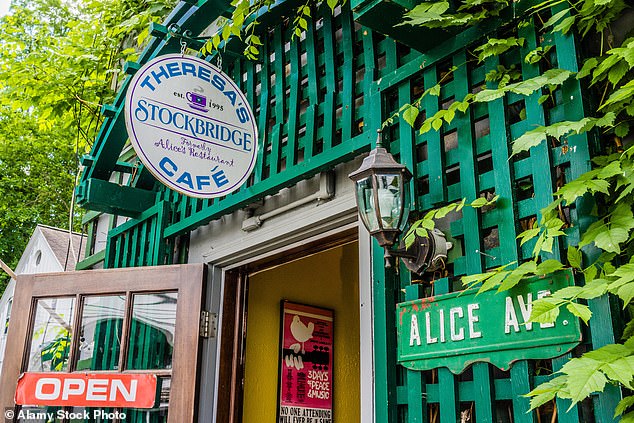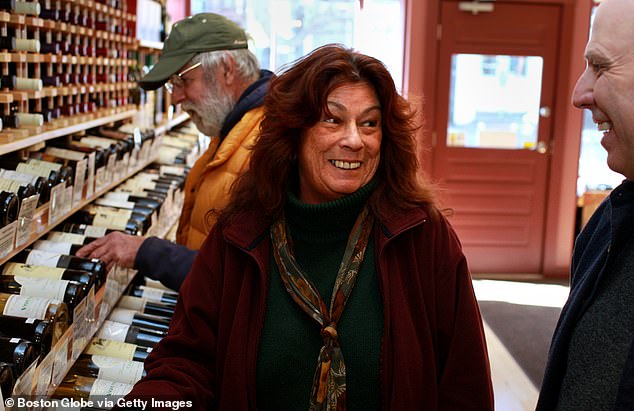Massachusetts restaurant owner Alice Brock, who was immortalized in a popular Arlo Guthrie song, has died at the age of 83.
Brock died Thursday at a hospice in Wellfleet of chronic obstructive pulmonary disease, her caregiver Viki Merrick said The New York Times.
She was best known for Guthrie’s 1967 anti-war song Alice’s Restaurant, a classic rock Thanksgiving production.
In the 18-minute song, Guthrie sings “You can get anything you want” at Brock’s restaurant and talks about visiting her restaurant, the Back Room in Western Massachusetts, for Thanksgiving dinner a year ago.
In the text, Brock cooks a large meal for Guthrie and his friend Rick Robbins the day before they appear in court for littering; Guthrie sings about how he and Robbins left trash in a canyon.
Brock, who saved the men, even helped the songwriter write the first half of the song.
“We sat around after dinner and wrote half the song,” she says said earlier.
After the release of the song, the restaurant owner herself became somewhat famous and people started to recognize her from it.
Massachusetts restaurant owner Alice Brock, who was immortalized in a popular Arlo Guthrie song, has died at the age of 83
“I felt very uncomfortable because public figures aren’t really treated with a lot of respect,” she told WAMC Northeast Public Radio in 2014. ‘Once your name is in the paper, people feel like they can say, ‘Oh, are you Alice? ’round’, like they want to see my butt or something.’
Guthrie performed the song at the Newport Folk Festival in 1967 and it was also the title track of his first album.
Despite her brief dose of fame, Brock channeled her energies into the restaurant world, trying other establishments and writing several books.
But she closed her last one in 1979 before moving to Provincetown, Cape Cod, where she took up painting as a career.
However, the restaurateur couldn’t completely escape the fame that Guthrie’s song brought and she eventually leaned into it.
“I hated it for a long time,” she told the radio station. “But I realize now that people are only happy when they hear my name, so how can I complain?”
Brock was originally from Brooklyn, New York, where she was born Alice May Pelkey in late February 1941 to a real estate agent mother and a printmaker father, according to The Times.
She had a brief stint at Sarah Lawrence College, but left during her sophomore year because she started supporting “unpopular political causes.”

In the 18-minute song, Guthrie sings “you can have anything you want” at Brock’s restaurant and talks about visiting her restaurant, the Back Room in Western Massachusetts, for Thanksgiving dinner a year ago.

At her mother’s insistence, she opened the Back Room. The Back Room closed in 1967 (photo: the business is now in its place)
She eventually moved back to New York and lived in Manhattan’s Lower East Side neighborhood, where she met her husband and architect Ray Brock.
The couple married in 1962 and soon after moved to Stockbridge, Massachusetts, where they began working as teachers at the local private institution.
While in school, they befriended Guthrie, the son of folk singer Woody Guthrie.
After giving up teaching and at her mother’s urging, Brock opened the Back Room. Around the same time, her mother helped them acquire a deconsecrated Episcopal church, which they transformed into their home, according to The Times.
She closed the restaurant in 1967 and sold the church a few years later.
Guthrie bought it in 1991 to turn it into a home for his archives and to create a community action center.

